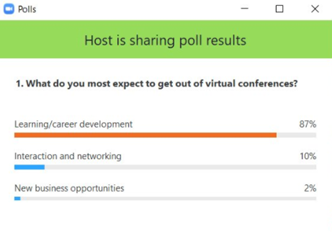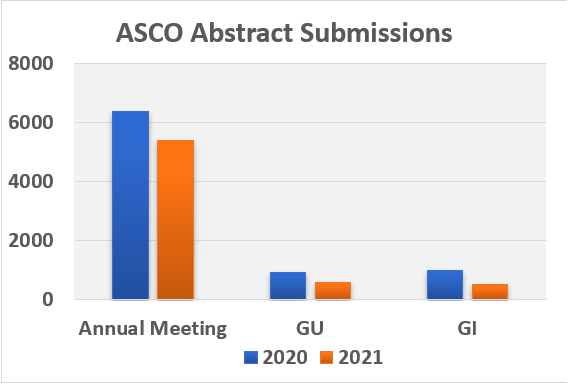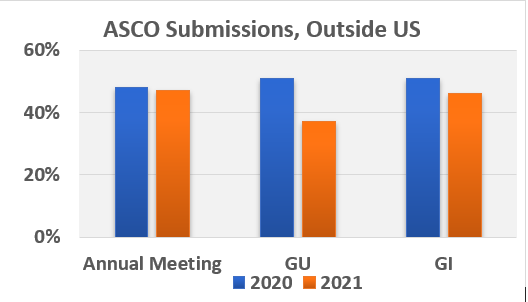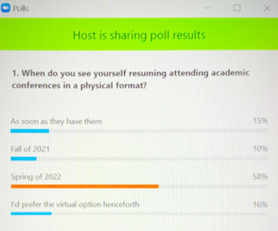In academic and pharma circles, annual conferences of professional medical societies are landmark calendar events that facilitate pre-publication sharing of key results in early phases of research, networking among researchers working on related research areas, and important scientific exchange between pharma representatives and physicians.
Many medical societies have had annual conferences running in by-and-large the same format for decades—for example, over 100 years and 50 years for the American Urological Association (AUA) and the American Society of Nephrology (ASN), respectively. Naturally, then, the COVID-19 pandemic caused a major upheaval in the operations of these societies and forced them to pivot rapidly and embrace the digital format in a way they never had before. Their decisions with regard to member engagement during the pandemic will critically shape how academic conferences will evolve in the future.
At the ISMPP Virtual 17th Annual Meeting in April, I had the privilege of moderating this very interesting session with leaders from the American Society of Clinical Oncology (ASCO), AUA, and ASN. The session shed light on
- how medical societies made quick decisions to move their annual conferences to the virtual realm in 2020;
- how their members, partners, and sponsors responded to this shift; and
- what the future looks like and key lessons these societies will be taking along.
The main reason to attend conferences:

The session began with a poll asking the audience what they most hope to get out of virtual conferences.
While most participants selected learning/career development, panelists shared that most of their members actually attend physical conferences for networking, which is not as successfully replicated in virtual conferences.
The decision to go virtual
Speaking on decision-making in the shift to virtual in 2020, panelists shared that the most important factors to consider were the
- time available for planning;
- familiarity of their internal team with technology and digital solutions;
- participants’ perceived willingness to pay for a virtual experience;
- ability to provide content for different time zones; and
- ability to offer networking and interaction opportunities for both participants and sponsors/exhibitors
ASCO’s conference was held virtually in 2020 and will be held virtually in 2021. AUA’s virtual conference in 2020 had as a keynote speaker Dr. Anthony Fauci, Director of the U.S. National Institute of Allergy and Infectious Diseases, and Chief Medical Advisor to the President; this resulted in a considerable increase in conference registrations and memberships to the AUA. In 2021, the AUA conference is scheduled to comprise virtual events running from May through September and culminating in a physical meeting in the fall. The ASN conference, being in the fall of 2020, allowed organizers more planning time and saw over 10,000 attendees at their virtual event; plans for 2021 are still shaping up.
Linking meetings and publications

There is a strong synergy between the Publications and Meeting Departments of academic societies, with a lot of meeting content flowing into society publications. At ASCO, the 2020 Annual Conference shift to virtual was announced after abstract submission, so submissions were on par with previous years. However, abstract submissions, for their annual meeting as well as their gastrointestinal (GI) and genitourinary (GU) cancers symposia, dropped in 2021. Nevertheless, there was no corresponding drop in journal submissions. Trends were similar for international submissions.

Attendance, experiments, and member/sponsor experience
In general, attendance at the ASCO, ASN, and AUA 2020 conferences met expectations and was even higher than that in previous years. Contrary to expectations, the international attendee composition for all societies remained comparable to previous years; however, more students and early-career researchers tended to attend virtual events.
The ASN ran plenty of experiments during their 2020 virtual conference (known as Kidney Week) and featured several avenues for attendees to network and interact with sponsors, including wellness activities, a digital photo booth, a scavenger hunt, and live chat and Q&A sessions. While the conference was in the EST time zone, content was being streamed from 9 AM to 7 PM EST to allow participants in other time zones to get some live content. Attendees also received a digital daily newsletter offering highlights from the conference content each day.
Overall, all three societies’ virtual conferences received favorable feedback from attendees. The general observation from all panelists was that the content was well received and that attendees came back to view the content even after the conference. However, the networking opportunities were not as successful, possibly because of “zoom fatigue” and the fact that physicians attending virtually are likely to block time on their calendars only for key sessions rather than social events. Poster sessions tend to not be as interactive in virtual conferences, but the “Better Poster” or “Poster 2.0” format may lend itself to better virtual interaction.
For sponsors and exhibitors, the virtual conference experience is generally not as strong as the physical one. One important reason for this is that sponsor events at physical conferences tend to be designed around food and networking, which are big crowd-pullers that gamified incentives cannot really match in the virtual world. Digital platforms have some way to go in designing meaningful engagement opportunities for conference sponsors.
Lessons learned and a glimpse of the future
According to Jennifer Regala from the AUA, “The pandemic has taught us how to collaborate and that anything is possible.” The pandemic has allowed societies to break silos across departments; for example, at the AUA, the central social media team is now liaising closely with the Publications and Meetings Department to drive promotion for the annual conference. The Publications Department is actively thinking about how they can use publications to maximize their marketing, communications, meetings, education, and membership strategies.

An audience poll on when they see themselves attending physical conferences again showed that physical conferences will still be in demand after the pandemic. However, all panelists agreed that hybrid conferences with integrated physical and virtual components are the mandate for the future. Hybrid conferences offer unique opportunities for the inclusion of members who cannot make it to physical conferences while overcoming networking and sponsorship challenges posed by digital conferences.
Professional medical societies operate at the intersection of pharma, physicians, and publishers—all key stakeholders in the medical publishing industry. So there is much value for the industry to follow and learn from the activities of medical societies, and this session provided that opportunity.
This article is part of a comprehensive report by Cactus Life Sciences on the Virtual 17th Annual Meeting of ISMPP. Click here to get the full report.
Share this post
About the author

Clarinda Cerejo
Clarinda Cerejo is Senior Director, Thought Leadership, at Cactus Life Sciences













